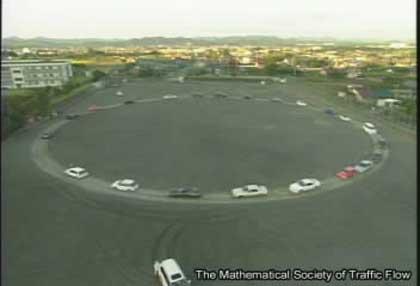Text written in Basque and translated automatically by Elia without any subsequent editing. SEE ORIGINAL
Traffic and physics
Click on the image to watch the video
many hypotheses. According to one, it is only a basic matter of particle physics. In systems with large quantities of particles, it is impossible for all particles to move at the same speed, which forces the accumulation of particles from a certain density. Applying this physical theory to traffic explains how traffic jams occur when many cars
circulate, but that is just a theory. Japanese researchers have conducted an experiment to see this theory in practice. Many cars have been introduced on a 230 meter circular track. Drivers are asked to travel at a determined speed of 30 kilometers per hour. But it is impossible for all cars to circulate at that speed at all times. They will move faster or faster sooner or later. This causes the effect predicted by particle physics: cars accumulate, that is, jams occur. Hence the paradox that was mentioned at the beginning: the fast modern world demands that there be many cars, which slows traffic forcibly by order of physics.
Video: New Journal of Physics
Buletina
Bidali zure helbide elektronikoa eta jaso asteroko buletina zure sarrera-ontzian












